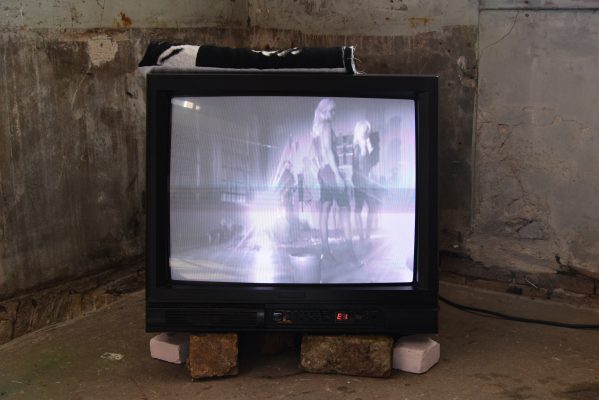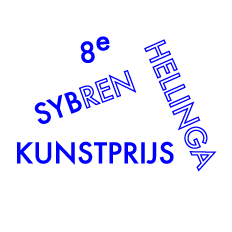17 October 2016
Interview with Machteld Rullens
Yasmijn Jarram

Why did you choose to go to the Art Academy?
“I think that my choice to become an artist has much to do with the home in which I grew up in. My parents were forever collecting and moving things. They just moved back to the Netherlands from Rome and their house, in the Netherlands, is full – they now have two of everything. Ever since I was young I would make drawings of my parents’ stuff. The house had previously belonged to Americans and my room was covered in Coca-Cola branded wallpaper. Even the carpet was red and white. When it came to time for me to leave my parents’ home I wanted to do something where I could combine the creative thinking of my hands with my thoughts, on both a philosophical and social ground. At the academy I did not immediately find a way of doing this. I continued to search for what exactly I wanted to do. You could very well say that I had absolutely no idea of what being an artist entailed. Everything I tried to do was an experiment.”
After you completed your studies at the Royal Academy of Art in The Hague (KABK) in 2012, you went on to do a masters degree at the Piet Zwart Institute in Rotterdam. What made you choose this course?
“The Piet Zwart Institute spoke to me as it brought together a group of highly motivated people who came from diverse backgrounds. You had an enormous studio at your disposal and were pushed to repeatedly discuss and present your work. I learnt much from my fellow students, for example to take the time for my own work. My artistry is not a sprint; I am running a marathon.”
You work predominantly with video and installations. What draws your interest to this?
“In video you can completely edit reality, though reality is sometimes more absurd than you could ever imagine. You draw out from a recording. I often think in images and try to simplify these images. Video also contains a sort of magic; it can be very hypnotic. And there are moving pictures all around us. Incidentally, the academy is where I first picked up a video camera. Naivety and ‘beginners luck’ is something I try to bring to every new work.”
Can you give me an example of this?
“During my early 2016 solo exhibition, The Latest, at the Rianne Groen gallery, I presented worked based on the Paris metro system which was developed by Hector Guimard. His Art Deco entrance to the underground is one of the symbols of Paris. Both graceful and yet aloof. I learned to weld in a three-month period at the studio of Neïl Beloufa, just on the outskirts of Paris, and it was where I first worked with wire. That video, which was part of the installation, features my welding work. The primary role played in the piece is a one-armed lobster, which complains about French society and is eventually cooked.”
So, you worked and lived in Paris for a while. Did this have an influence on the content or the process of a ‘finished’ work? Does your work come from specific places or interactions?
“The place where my work is developed or exhibited is important. I often take that as a starting point. What is happening there? How do people react to their surroundings? How do they move in the space? How will I work with the competing elements of the exhibition? How can we collectively rebel? It’s the small details that make up the greater whole. My work always stems from collaboration. I try to challenge myself by involving others in the creative process – I, for example, then question someone on the spot about an image or situation, or I give instructions to people and see to what extent they will go along with it. In Gent, I lived near St. Pietersplein, a large empty town square where I’d often sit. One day I noticed how we are no longer terribly good at navigating an empty space. I chose to follow people, through the square, carrying a long stick and a piece of chalk, so as to make a ‘social’ drawing.”
With your interest in spaces, does performance also play a role in the relationship between people and their behaviour?
“I definitely think about performance, but I’m not sure exactly of what it comprises. I find it fascinating to watch people working, which I can do for hours. There are YouTube videos of people doing nothing else but unpacking boxes of new products, it’s called ‘unboxing’. Brilliant how people can do something so obsessively and then find an audience for it.
So, you are also a collector of others’ curiosities?
“In a certain sense, yes. You could say that I’m interested in people who completely surrender themselves to this one thing, perhaps because I can’t to do that. It remains a combination of active searching and spontaneous revelation. I recently received a package from Marktpplaats that I didn’t dare to open as it had been so beautifully packed. I preserved it. Maybe it will make an appearance in a future work.”
You were nominated for the Sybren Hellinga Prize. Were you already aware of Kunsthuis SYB?
“Absolutely, although I have to say that I had never been there. I find it a real honour to take part in and work for a new audience. SYB’s space is not huge, and therefore we, as artists, need to coordinate well.”
What would you still like to achieve in the future?
“I hope to travel to Japan, a place where culture is well conceived and thought out and where people, as I imagine, follow the rules. Personally, that would irritate me and drive me to be counter to it. Also, I’d want to make a longer film with a team, though I’m not sure yet what about. Till then I will carry on collecting.
